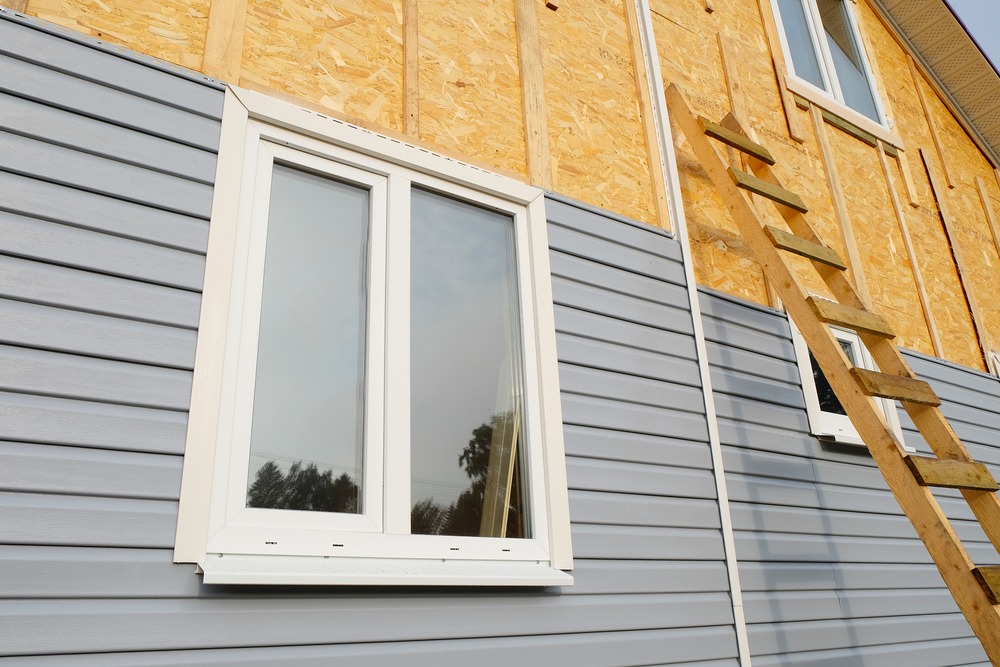One of the ways to add to your home’s beauty and curb appeal is by adding an exterior wall cladding.
They come in varieties of materials – composite cladding, brick, cement and hardwood cladding, among others.
Curb appeal revolves around the aesthetic quality of your house when viewed from the street.
Whether you are moving into a new home or remodeling an antiquated building, an exterior cladding material with the right color can have your property looking distinctly beautiful, with a uniquely stylish and decor.
Exterior cladding does not only improve your home’s aesthetics and visual quality. Exterior cladding can serve as an extra layer of protection for your building.
For instance, weather-resistant cladding material like composites can elongate your building’s lifespan by protecting it against inclement weather conditions, harsh temperature, rot, mold, moisture and insect attacks.
Exterior wall cladding can also insulate your building, protecting it from noise and heat, while saving energy and reducing the likelihood of structural decline.
Exterior cladding panels are also budget-friendly and multi-purpose, as it can improve the beauty of your home while increasing its functionality and lastingness by enhancing its strength and rigidity.
Which Exterior Cladding Material is Suitable for Your Home?
In picking the right material for your exterior cladding needs, there are factors most homeowners consider. The first is aesthetic appeal or beauty, then durability and lastly low maintenance.
Which exterior cladding material do you think embraces all these excellent attributes or features?
Composite cladding!
The composite cladding has met increasing popularity by homeowners. Let’s show you why it is most suitable for your home.
Low Maintenance
Composite cladding panels are known for their low maintenance feature. They are prefabricated and will still retain their beauty for more than three decades without the need for you to spend your time, funds and energy in maintaining them.
Composite materials won’t rot or splinter. You wouldn’t need to paint it periodically, and only soapy water can be used to keep them looking neat as new.
This is in direct contrast to the traditional hardwood cladding material that will require you to invest it staining and repainting to maintain its look.
Composite materials are cost-saving and time-saving.
Aesthetic Appeal
Composite materials come in an assortment of styles and colors that will blend beautifully into your property.
They have the grandiose appearance of timbre wood without the high maintenance.
You wouldn’t have to worry about rot and decay. This is a problem associated with timbre wood material.
Composite materials never split nor crack. So you will enjoy their beauty without expending resources to maintain them.
Durability
A strong combination of plastic and timbre wood is used to produce composite cladding panels.
This means composite cladding panels have the strength of both materials, which makes them more rigid and resilient.
The timbre wood in the composite material helps it to remain sturdy and tough while the high-performance plastic adds a feature of resilience to extreme weather conditions.
Composite cladding is built to last for the longest possible time. With more than 20 years warranty and aesthetically pleasing panels, you won’t regret purchasing it.
Eco-Friendly
Today’s society is more environmentally conscious than ever as we begin the gradual but deliberate shift from products harmful to the planet and toxic to our health.
Composite cladding is an eco-friendly product as it is made with recycled wood fiber and plastic materials. It does not in any way damage our environment as it utilizes renewable resources that could have been abandoned in landfills.
You wouldn’t have to worry about using pesticides or toxic chemicals to stain or paint composite cladding panels. They are also safe for kids and pets.

Which Exterior Cladding Colours are Suitable for Your New Home?
It can be challenging picking colors for your home’s exterior. You wouldn’t want to choose boring colors or too flashy ones.
The following tips will help you pick the right color that will add to the beauty of your home’s exterior and increase its market value:
- The style of your home can help you pick the right color for your exterior cladding. For instance, if you have a ranch-style home, bold colors may not be suitable for it. If your home has victorian architecture, the red or yellow cladding color may not do it justice. So it is important you use your home style or neighborhood for inspiration while picking the right colors for your exterior cladding.
- You can take a short walk around the neighborhood to observe the exterior colors and style, especially in homes that are designed like yours.
- Ensure you are not carried away by trends. If everyone is picking blue for their house color, it doesn’t mean you should do so. Trends are often short-lived.
- There is a high tendency that your home has some color scheme already. It may be the color of the roof or window. You can use that as a guide or base to select the right color. The size of the house can also inspire your wall clade color choice. For wide and spacious houses, dark colors may not be pleasant, as it may appear haunting. For houses with natural landscapes, green or blue may look better.
Final Thought
You can easily improve your home’s curb appeal by opting for weather-resistant cladding materials that will protect and insulate your home.
Exterior cladding panels are budget-friendly, multi-purpose and designed to be functional and long-lasting.
If you are looking to upgrade the exterior aesthetic of your home, you should take exterior cladding into consideration.



Comments are closed.